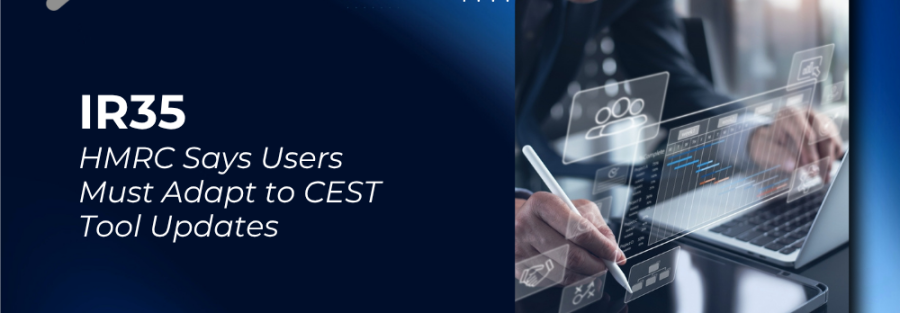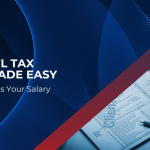The way you manage and report your income tax is changing, and the deadline is approaching fast. From April 2026, many sole traders and landlords will need to switch from the traditional Self-Assessment system to Making Tax Digital for Income Tax (MTD IT). If you earn income from self-employment or property, this change could affect you.
Here’s everything you need to know to prepare, explained in simple terms.
What Is Making Tax Digital?
Making Tax Digital (MTD) is a government plan to modernise the tax system. The goal is to make it more accurate, efficient, and easier for people to manage. It started with MTD for VAT, and now it’s expanding to include Income Tax.
Under MTD, you’ll be required to:
- Keep digital financial records
- Submit updates every quarter using MTD-compliant software
Instead of submitting one Self-assessment at the end of the year, you’ll now send updates every three months. The idea is to make your tax bill easier to estimate and manage throughout the year, and reduce mistakes that cost taxpayers time and money.
What Are the Benefits of MTD?
Switching to digital record keeping offers some clear advantages:
- Fewer errors from manual input or forgotten receipts
- Better cash flow management, as you can see what you owe more regularly
- Improved decision-making from regularly updated financial info
- Simplified expense tracking using apps to store receipts on the go
- Easier collaboration with accountants using cloud-based software
What Is MTD for Income Tax (MTD IT)?
MTD IT is the next phase in the government’s Making Tax Digital rollout. It replaces Self Assessment for people earning money from:
- Self-employment
- Property rentals
If you qualify, here’s what you’ll need to do:
- Keep digital records of all your income and expenses
- Send quarterly updates to HMRC using MTD-compatible software
- Submit an End of Period Statement (EOPS) and a Final Declaration each year
This means the traditional once-a-year Self Assessment tax return will be phased out for most sole traders and landlords.
When Does MTD IT Start?
The rollout of MTD IT will be phased in based on your annual turnover:
- Over £50,000: MTD IT applies from April 2026
- Over £30,000: Starts from April 2027
- Over £20,000: Expected from April 2028
Your income will be assessed based on your tax return from the 2024/25 tax year (submitted by 31 January 2026).
If your total income from self-employment and property exceeds these limits, you’ll need to follow MTD rules from the relevant date.
If you earn £30,000 as a sole trader and £25,000 from rental income, your total qualifying income is £55,000. You’ll be required to follow MTD IT rules from April 2026.
Who Needs to Register?
If your combined income from all sole trader businesses and rental properties is over the current threshold, you’ll need to register. For example:
- £20,000 from one business
- £25,000 from another
- £6,000 rental income
= £51,000 total → You’ll need to register by April 2026.
If your income is below the threshold, you’ll continue using Self Assessment—at least for now.
What About Partnerships?
MTD IT for partnerships hasn’t launched yet. HMRC hasn’t announced a confirmed start date, but it’s expected in future phases.
Can Anyone Be Exempt?
Yes, you can apply for an exemption if:
- It’s not practical for you to use digital tools due to age, disability, or location
- You have religious beliefs that prevent the use of electronic systems
How to Prepare for MTD IT
You don’t have to wait until 2026 to get started. Here’s how to prepare now:
Check Your Income
Look at your total annual income from all sole trader businesses and rental properties. If it’s above £50,000, you’ll need to be ready by April 2026.
Align Your Accounting Dates
If you have multiple businesses, it’s a good idea to align your accounting periods so you can file quarterly updates all at once. Your accountant can help you with this step.
Go Digital Early
Start using MTD-compatible cloud accounting software now. Tools like Pandle, QuickBooks, or Xero help with bookkeeping, automate expense tracking, and are fully ready for MTD.
Even if MTD IT doesn’t apply to you yet, getting used to the software now can make the transition smoother later.
Talk to Your Accountant
They can help you understand if and when you need to register and guide you through choosing the right software. You don’t have to go through this change alone.
Final Thoughts
MTD for Income Tax is a big shift, but it doesn’t have to be stressful. By understanding the rules and preparing early, you’ll save time, reduce errors, and make tax season far more manageable.
If your income is over the threshold, don’t wait until the deadline. The earlier you start using digital tools, the easier it will be to comply when the rules kick in.
Need help getting started? Your accountant or software provider can walk you through the setup and ensure you’re fully MTD-ready.





